The first thing you are struck by when walking in Honoria, the capital of Guadalcanal is how friendly the people are. Everyone seems to have a smile on their face and a welcome “Hello” or “Good morning” or even a high five!
There are over 900 islands in the Solomons with over 70 different languages spoken!
As with the other islands we visited, a local dance and singing group greeted us as we disembarked the ship. The flutes being played varied from small to large bamboo with more bamboo used like drums and xylophones. A man dressed with a warrior mask danced and advanced towards us.
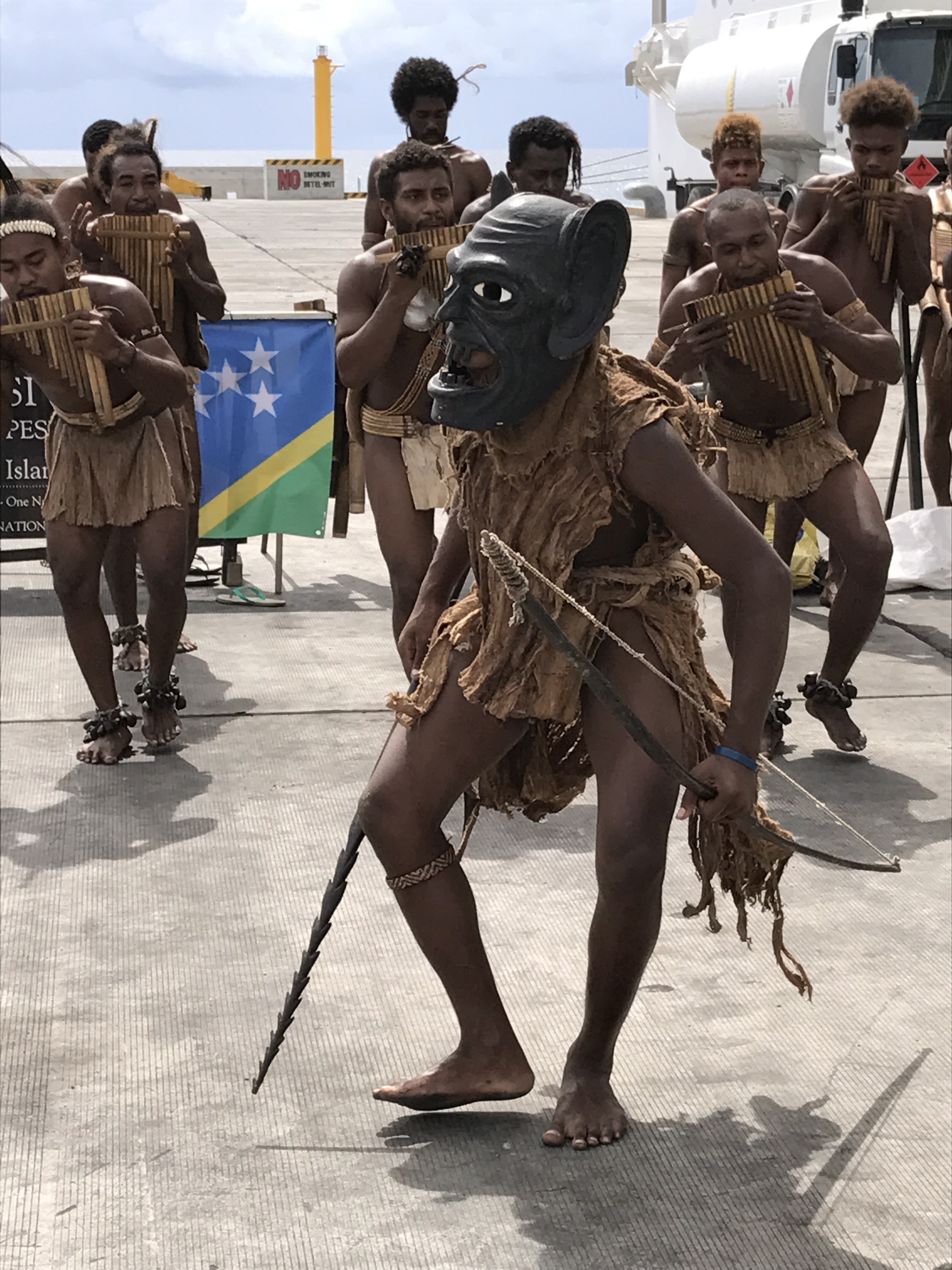
There were no issues here with safety walking out the port zone to the busy main road. However other passengers reported that other parts of town where tourists normally don’t visit were a bit sketchy. A fight between two men wielding screwdrivers broke out in the middle of a street and their taxi driver had to carefully back away from the situation before it escalated with more participants.
The air as usual is hot and muggy. We quickly made our way to the local museum that held archeological and wartime artifacts.
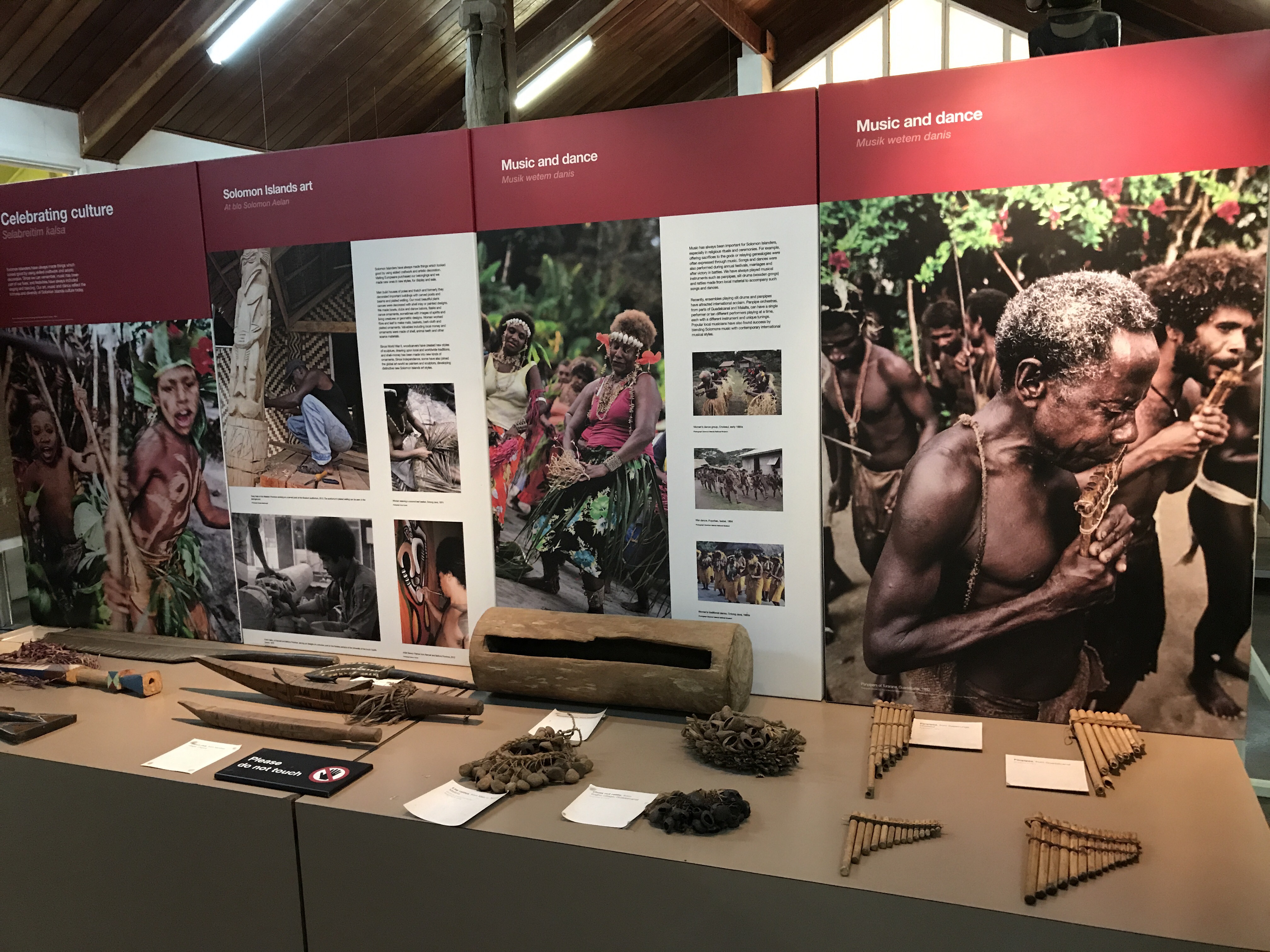
As most would know, Guadalcanal is famous for its pivotal role in WWII when American forces landed to try and wrestle away control of the island from the Japanese who were trying to expand into many islands in the South Pacific.
Although the Americans landed without too much difficulty at what is now known as Henderson Field, the next six months were the most hotly contested campaigns in the war which the Americans eventually succeeded at a great cost.
There are so many ships sunk in the waters off Honoria that is it referred to as Ironbottom Sound because of all the iron ships that rest on the bottom.
The Solomon Islands National Museum though offered great information on the indigenous population as well as to how the locals did help American and Australian army and navy personnel to help defeat the Japanese.
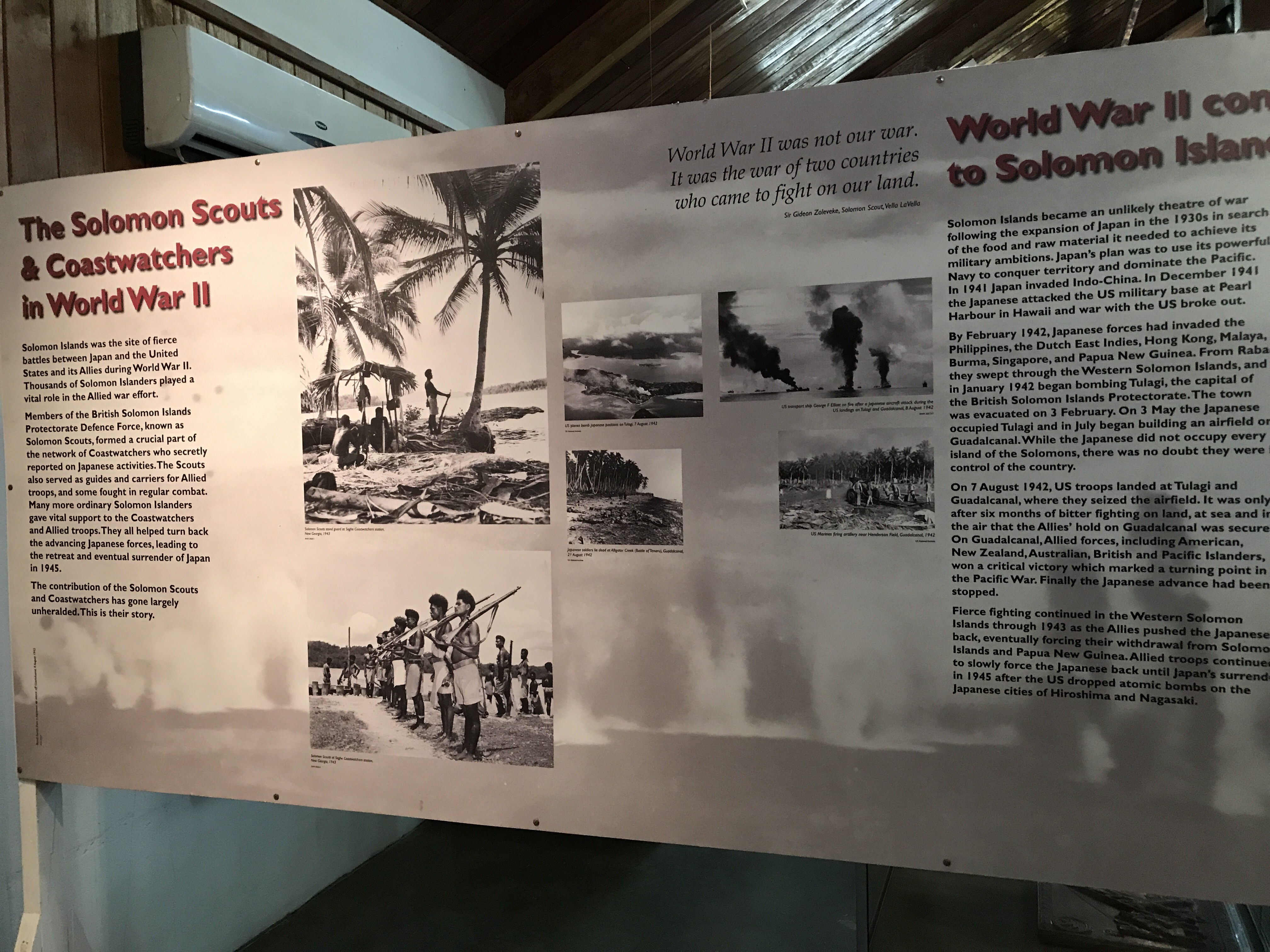
Tiki statues are intricately carved to tell stories of the Solomon Islands people.
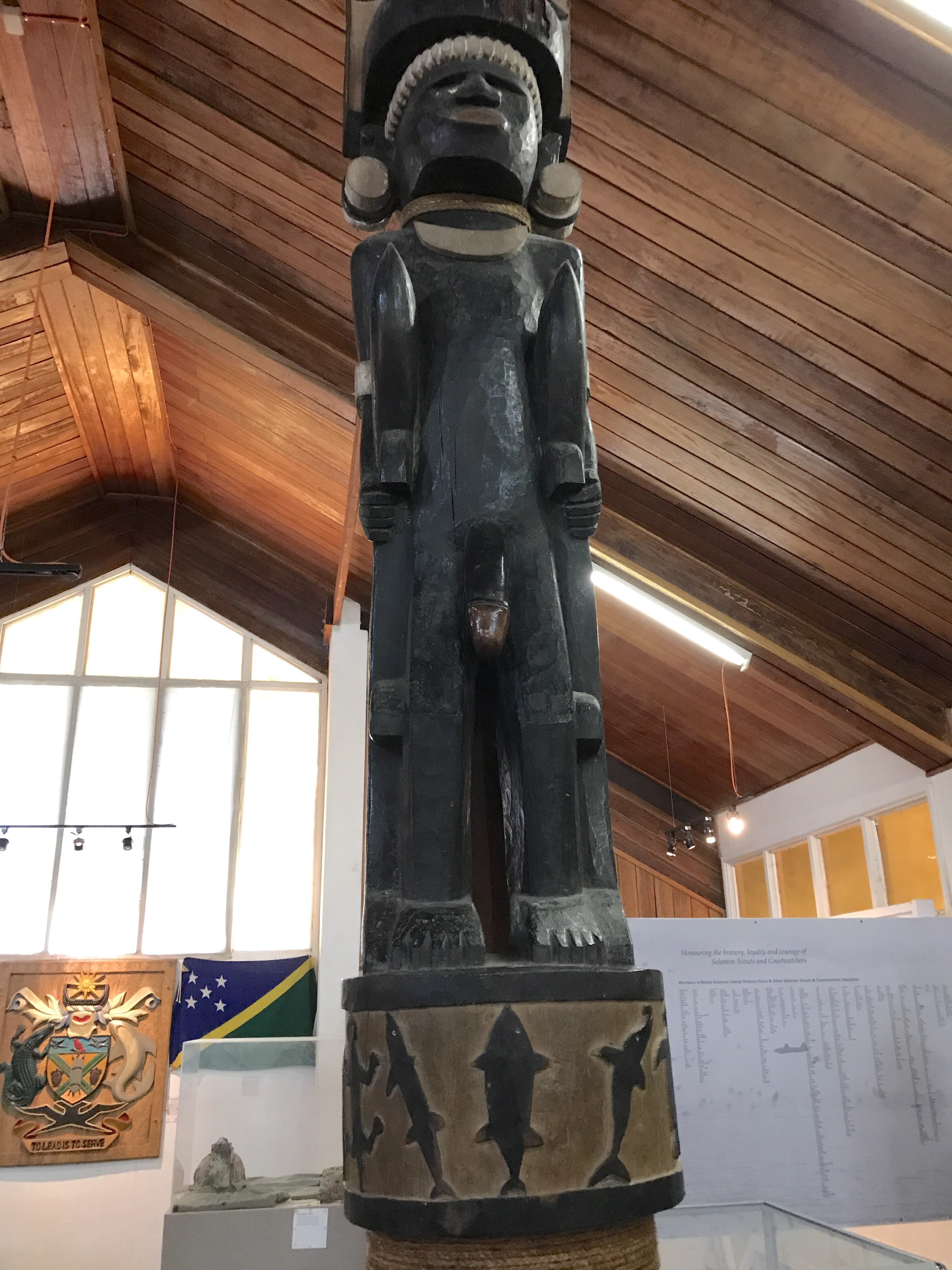
Guadalcanal also has many areas to visit that commemorate WWII though with our limited time we didn’t get to stop at many.
After the museum, we walk a few blocks to shop at the art gallery which is an open air market for arts and craft.
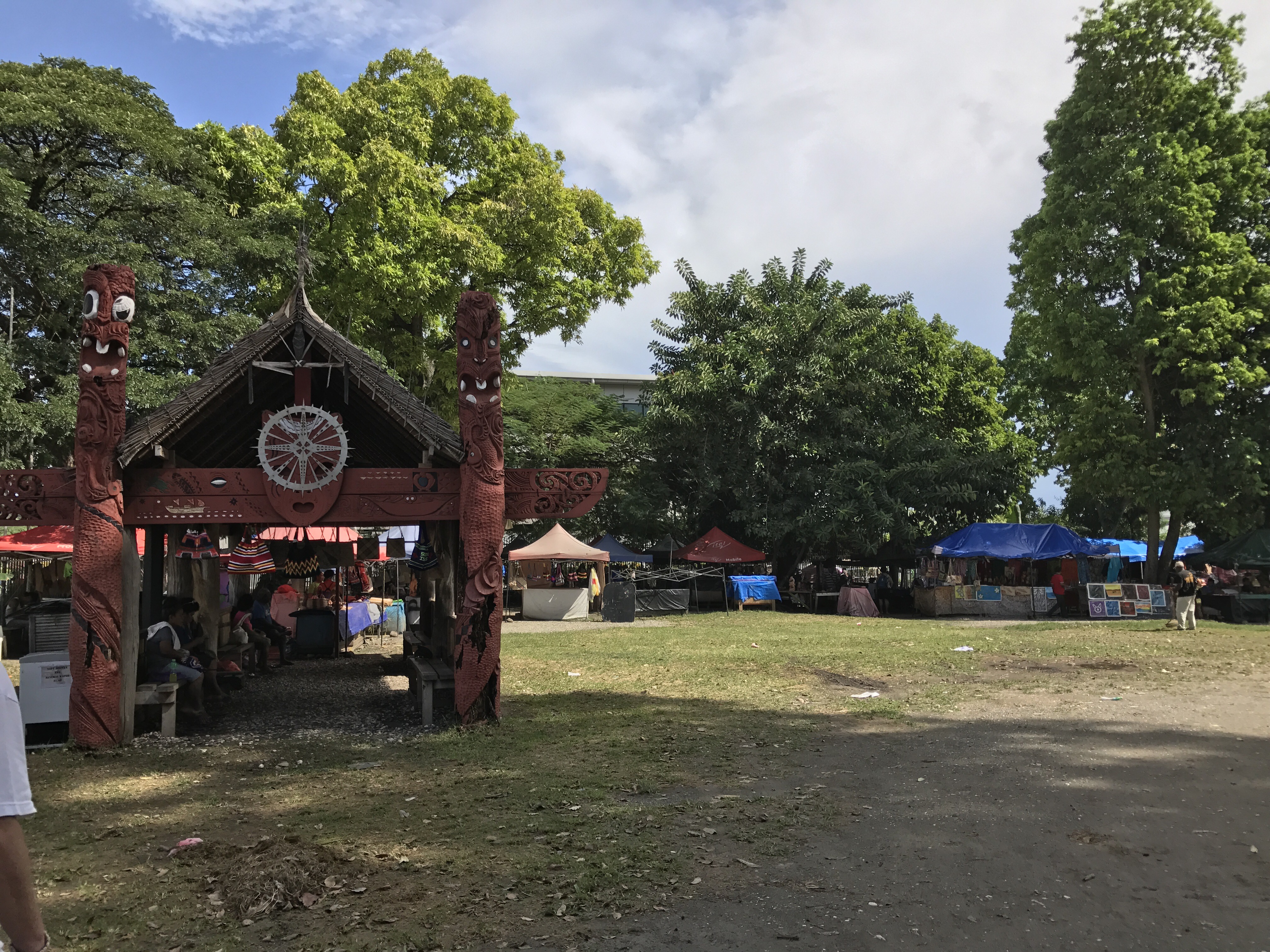
The carvings are magnificent and all done locally. We see the artists carve and smooth out rosewood, coconut and ebony depictions of turtles, eagles and beautiful bowls.
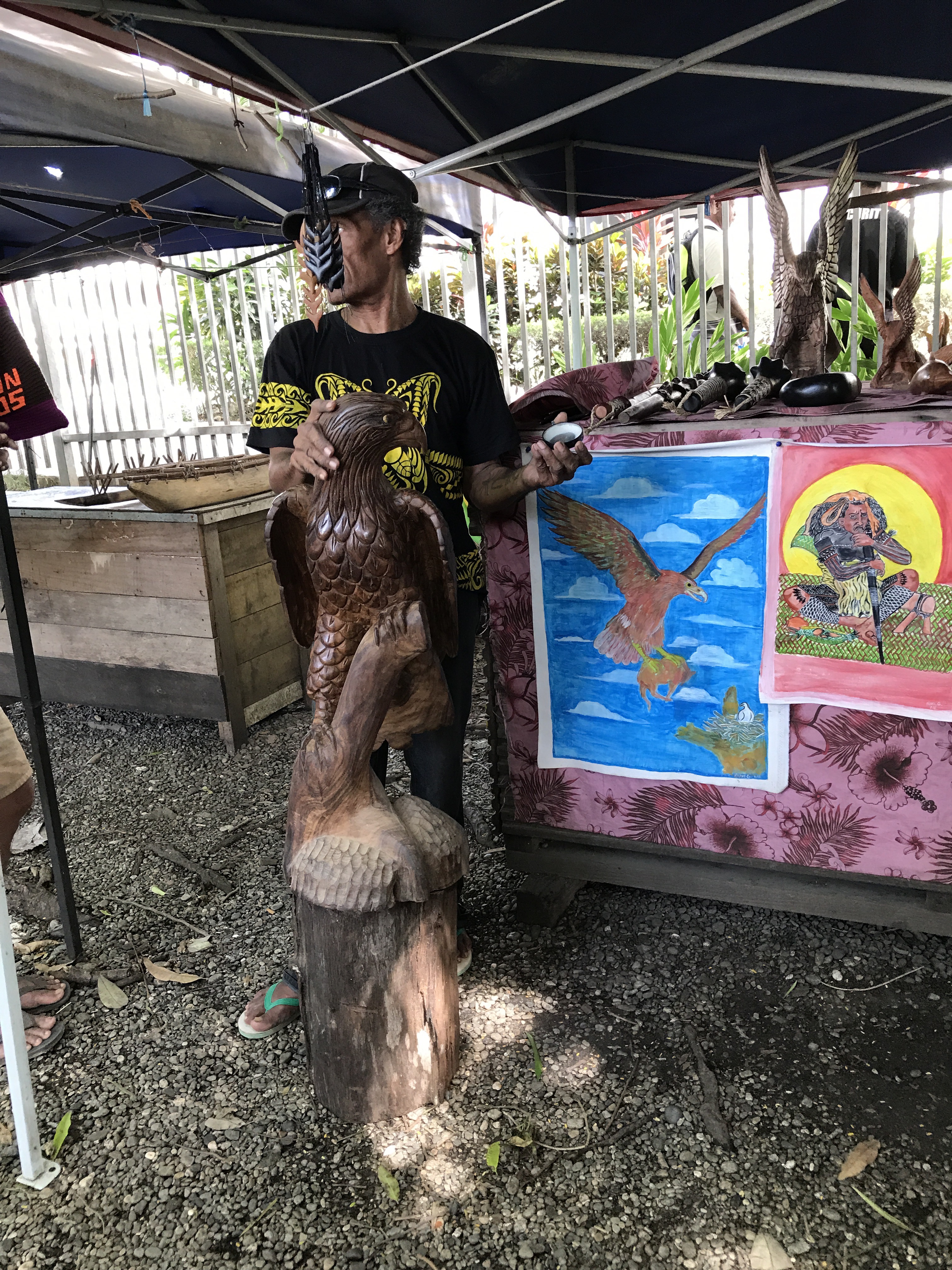
The paintings are vibrant and depict the local birds, ocean and land creatures.
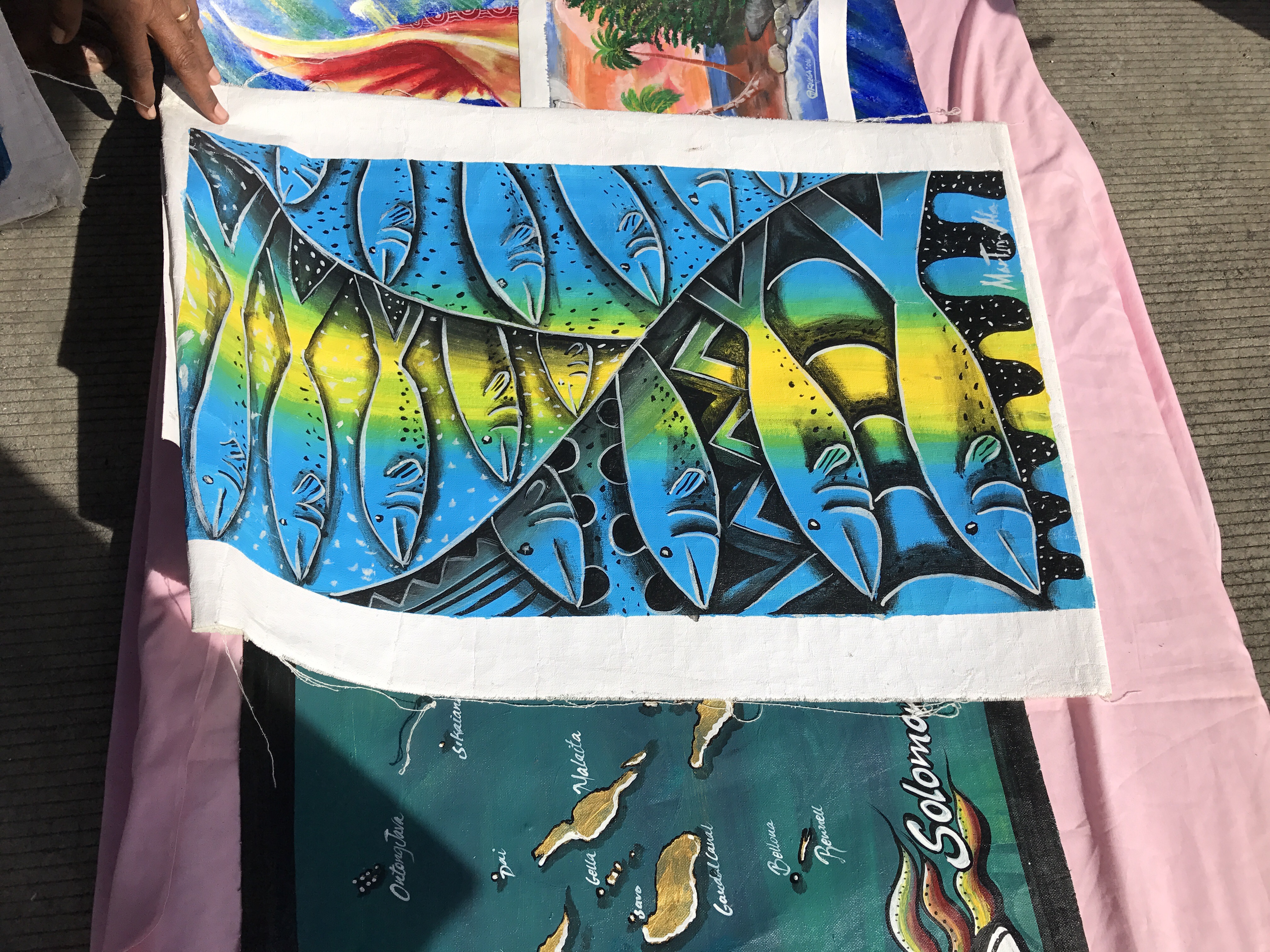
Everyone is friendly and graceful.
A return to the ship is necessary for a quick bite to eat before our afternoon excursion to a beach where we hope we can get the last opportunity to snorkel. Our original plan to go to the famous Bonegi Beach to snorkel among underwater wrecks had been cancelled by the ship and local operator because of poor sea conditions. The alternate Ginger Beach was proposed where we could snorkel among coral but no wrecks.
The bus ride takes about 45 minutes along the coast. As with many other islands we visited, we see the markets alongside the road where fruits, vegetables and betel nuts are plenty for sale.
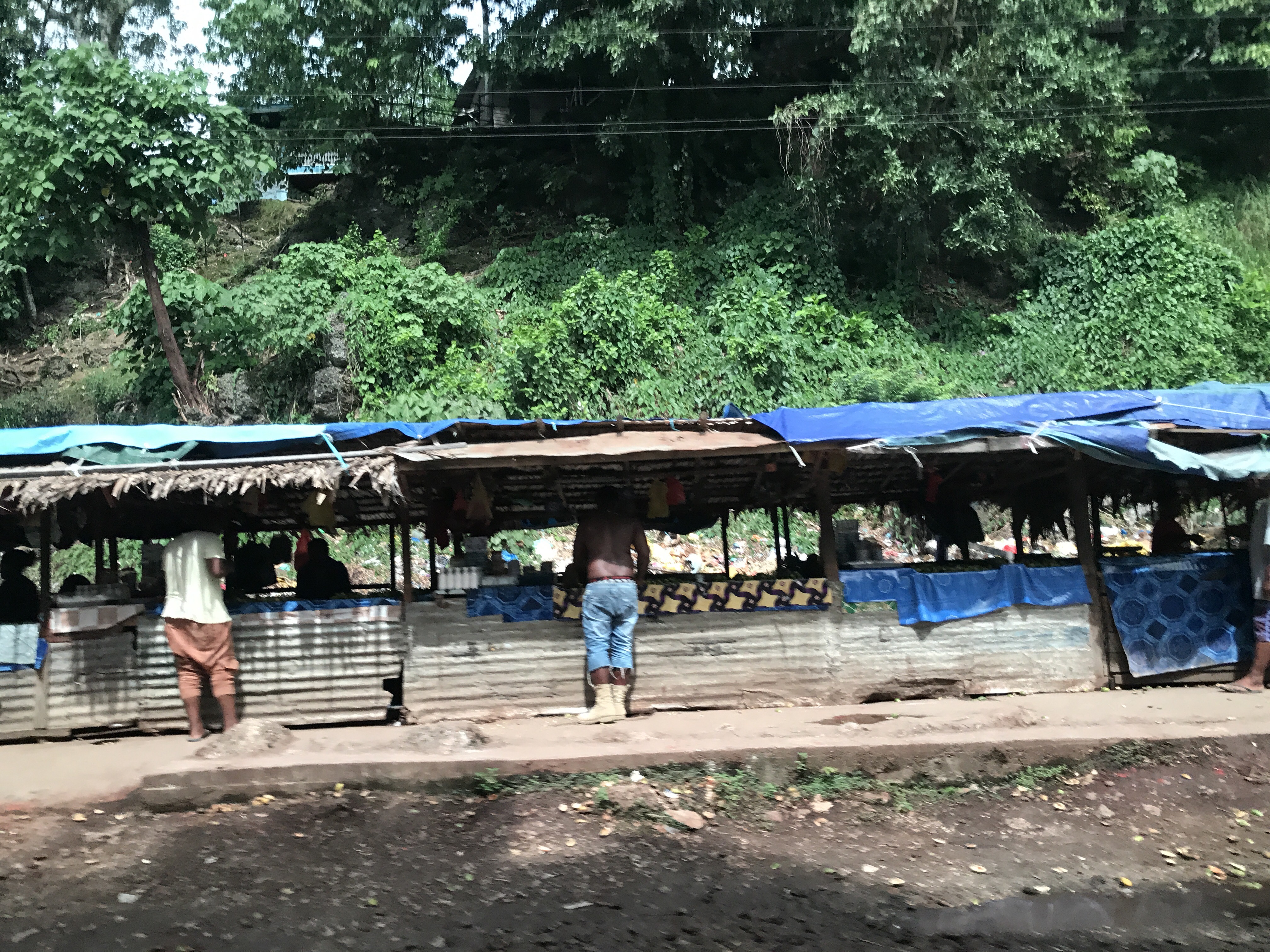
Most people do subsistence farming and will go everyday to sell their produce. They also have a unique way to wash their cars!
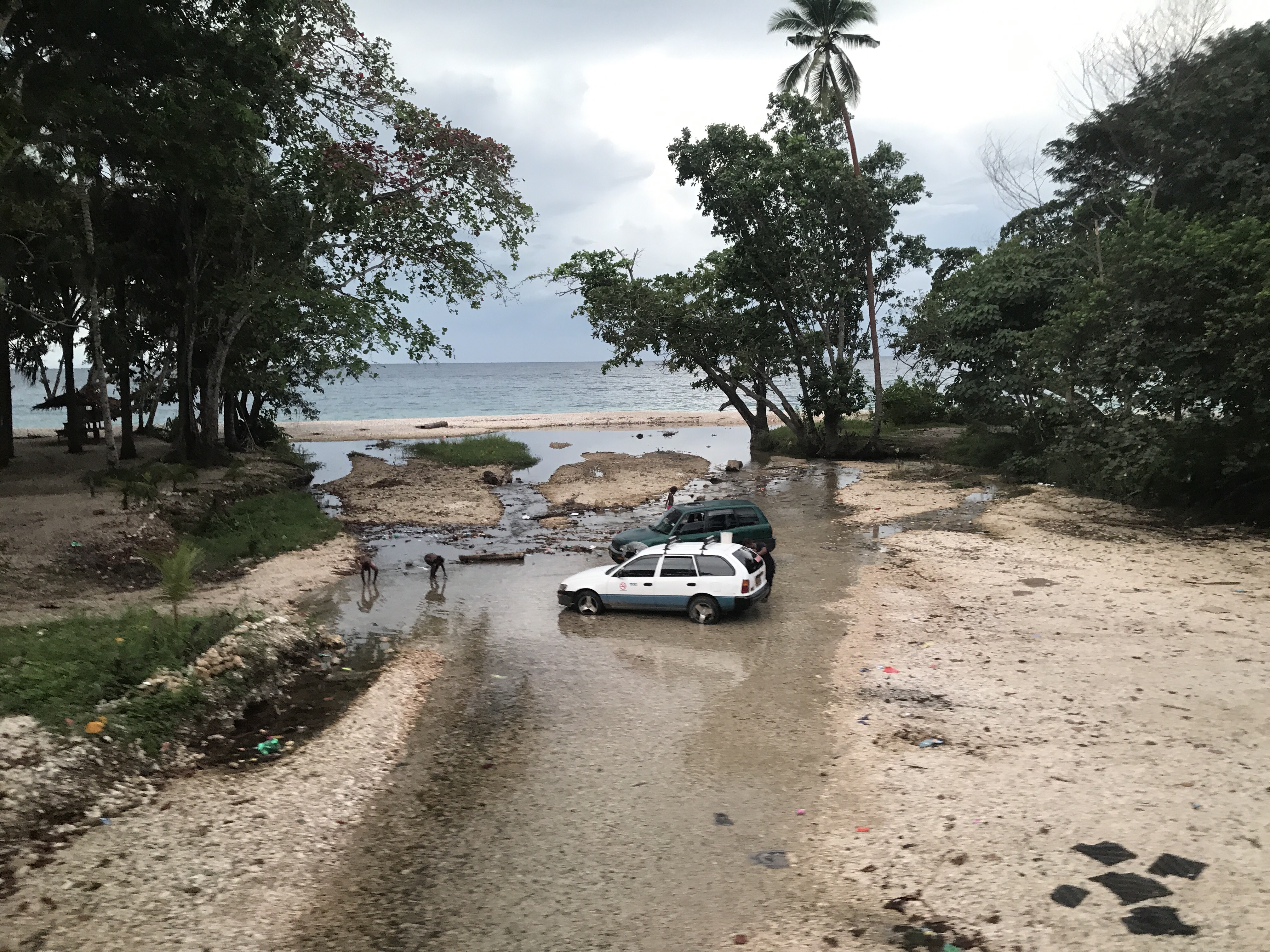
There is poverty again that exist and garbage that is strewn alongside the road like so many of the other islands we visited. We’ve come to detest plastic bottles and bags.
The Solomon Islands are part of a volcanic and earthquake zone. Therefore the beach we arrive to visit has volcanic black sand. We are met with lais for the men and flowers for the women to place behind their ears. Coconuts are handed out with straws to thirst our quench with its sweet water. A women’s dancing and singing troop performed for us.
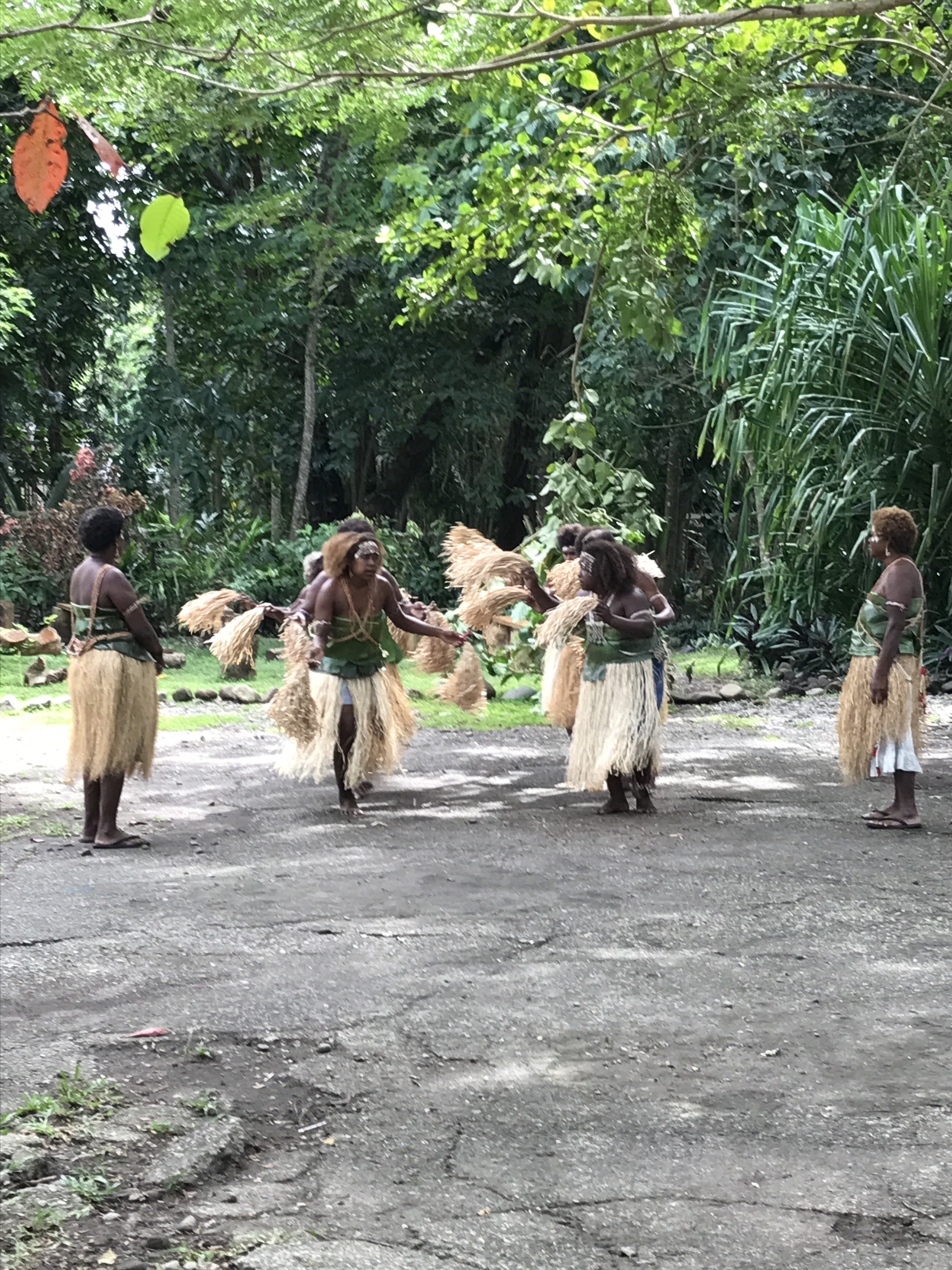
As we head out to the beach it is evident that the snorkeling will not happen today. The previous day’s rain and the surf is churning the sand making for poor visibility. The first few feet getting in the water is rocky making it difficult to walk through without water shoes. Most snorkelers give up after a few minutes and return to just enjoy the beach. Perhaps some discussions about sharks and estuary crocodiles put a damper on some to venture too far out though the guides assured everyone that it was perfectly safe to do so.
There is not much development on the beach itself except a raised earth landing for a barge to attach to haul timber and a few houses along the coast.
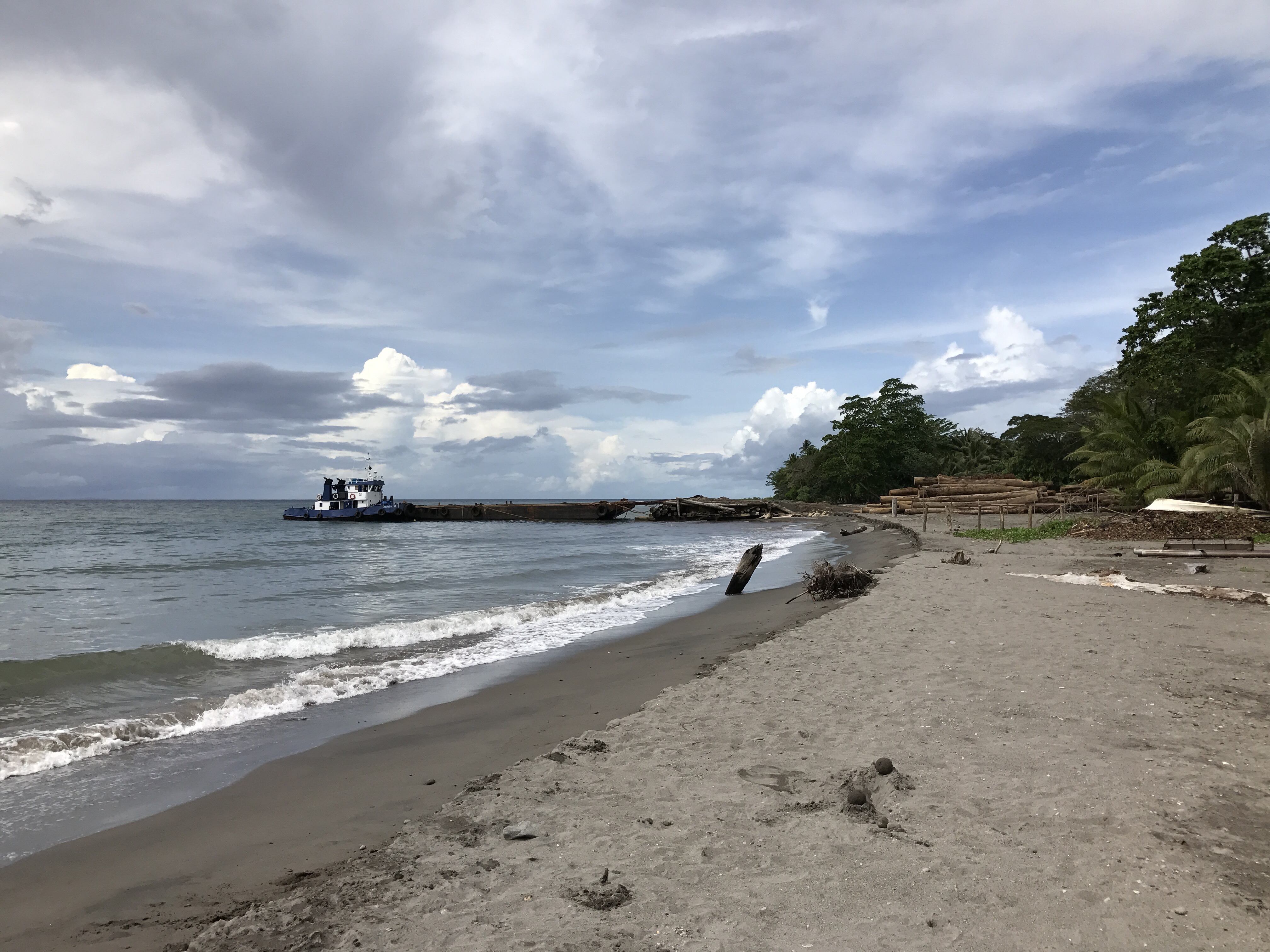
Beaches are mostly private on Guadalcanal so if you are not on a tour, you must pay the local land owner.
We walk along the beach which at one point separates a freshwater estuary from the ocean. A little creek has been carved by Mother Nature to spill into the ocean.
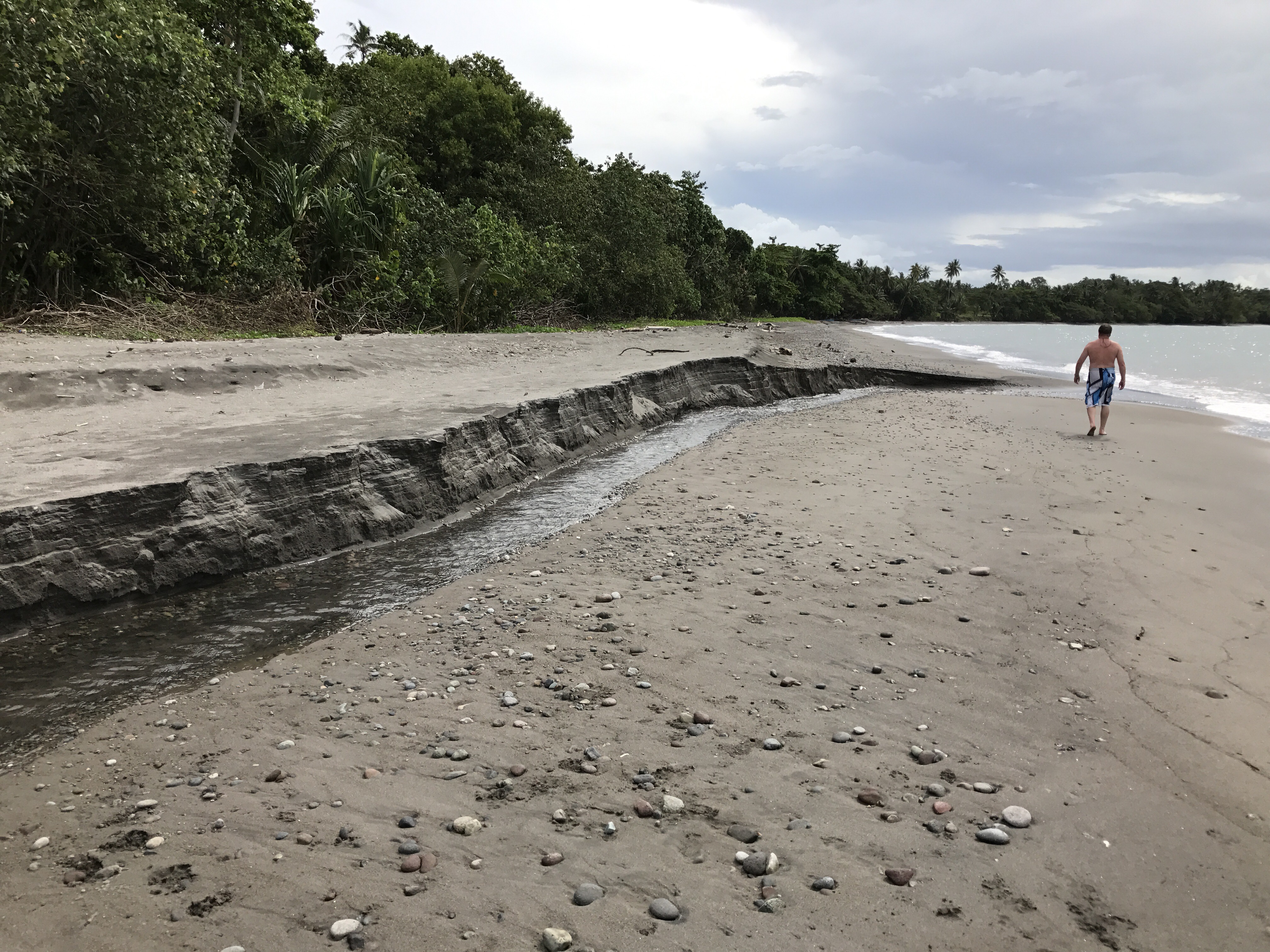
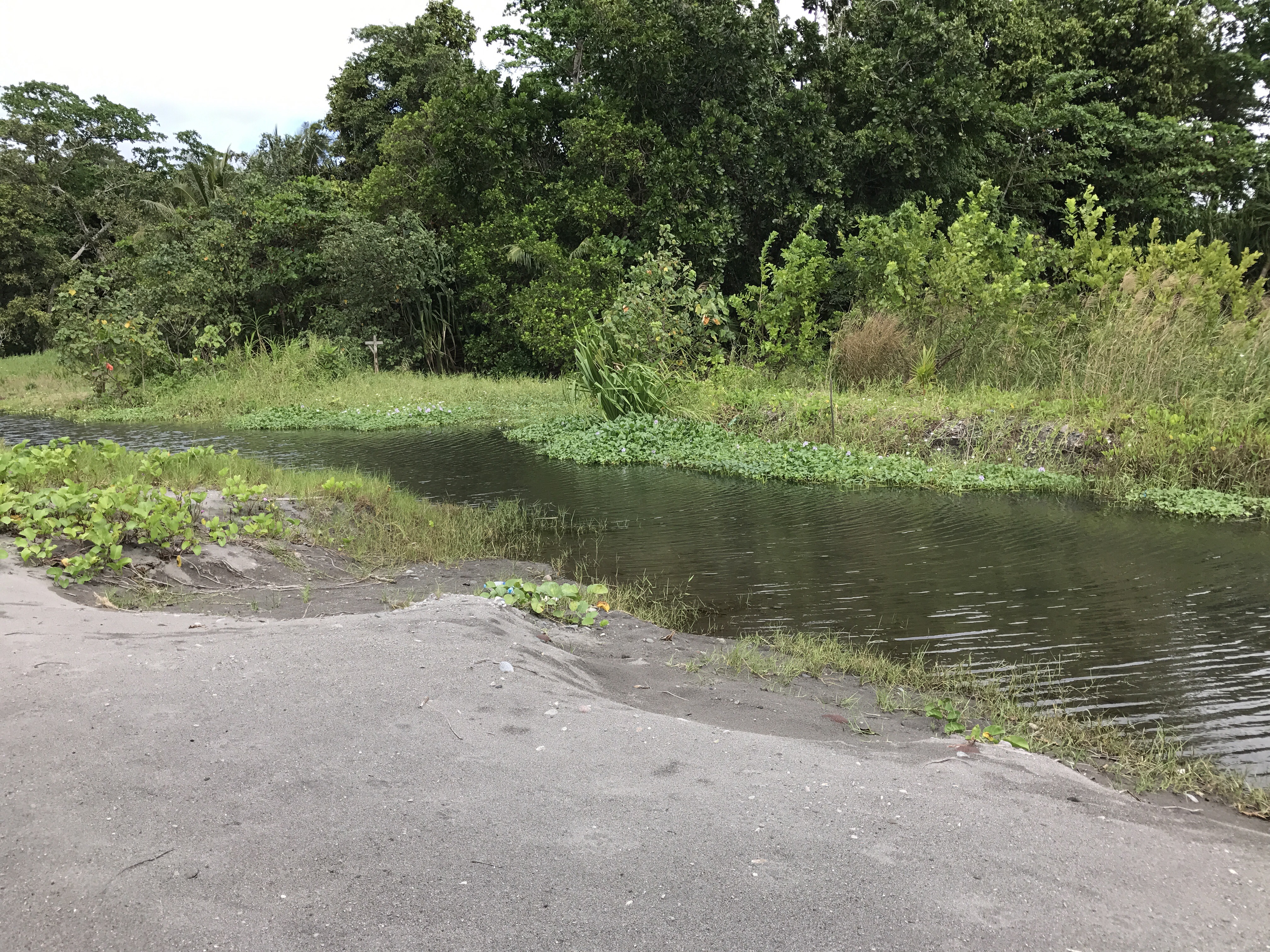
We look to see if we can spy any reptiles but none appears to be around. Super fast little white crabs scurry around our feet trying to get away from us. A few driftwood stumps make great photography subjects.
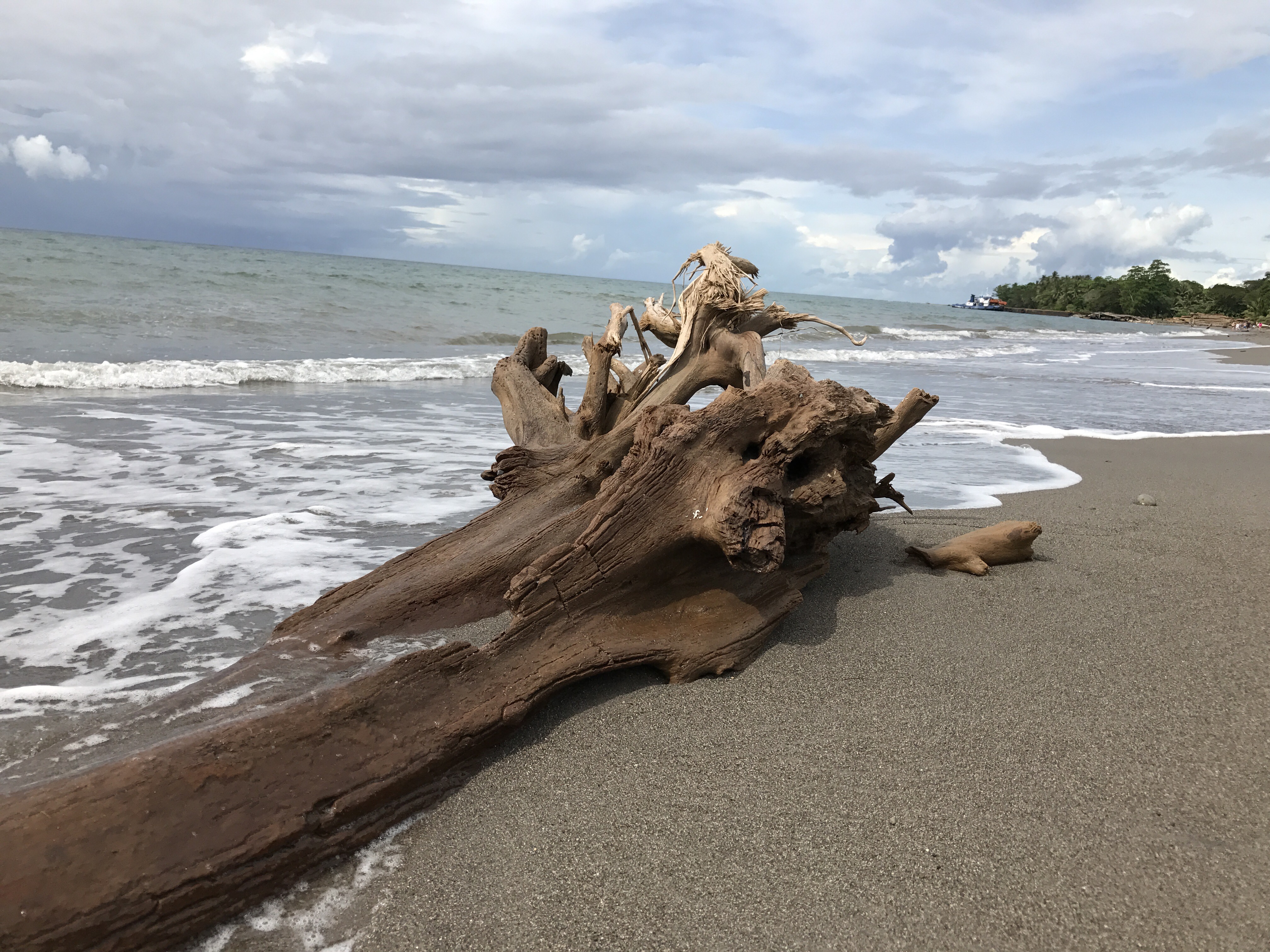
Back near our beach picnic area is a small bottle shop where local Sol beer is sold. A free beer cozy is par for the course when you purchase a brew. Local children play amongst us and we have some time talking with the local women.
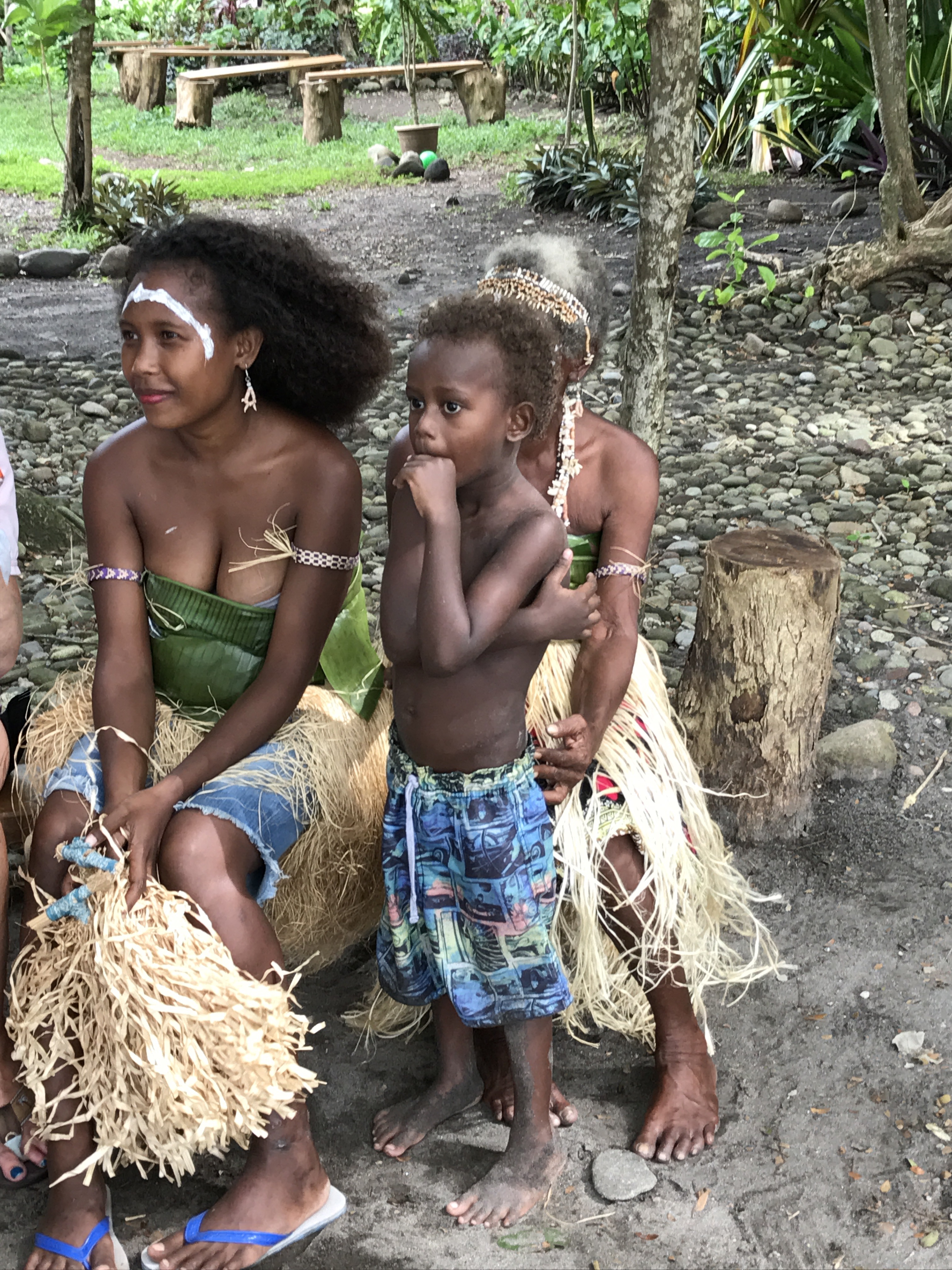
We wonder about some of the children and adults we have seen with blonde hair. A result of mixing the locals with WWII G. I.?the answer is surprisingly no. Blonde hair is due to a single gene found in the Solomon and not due to any European influences.
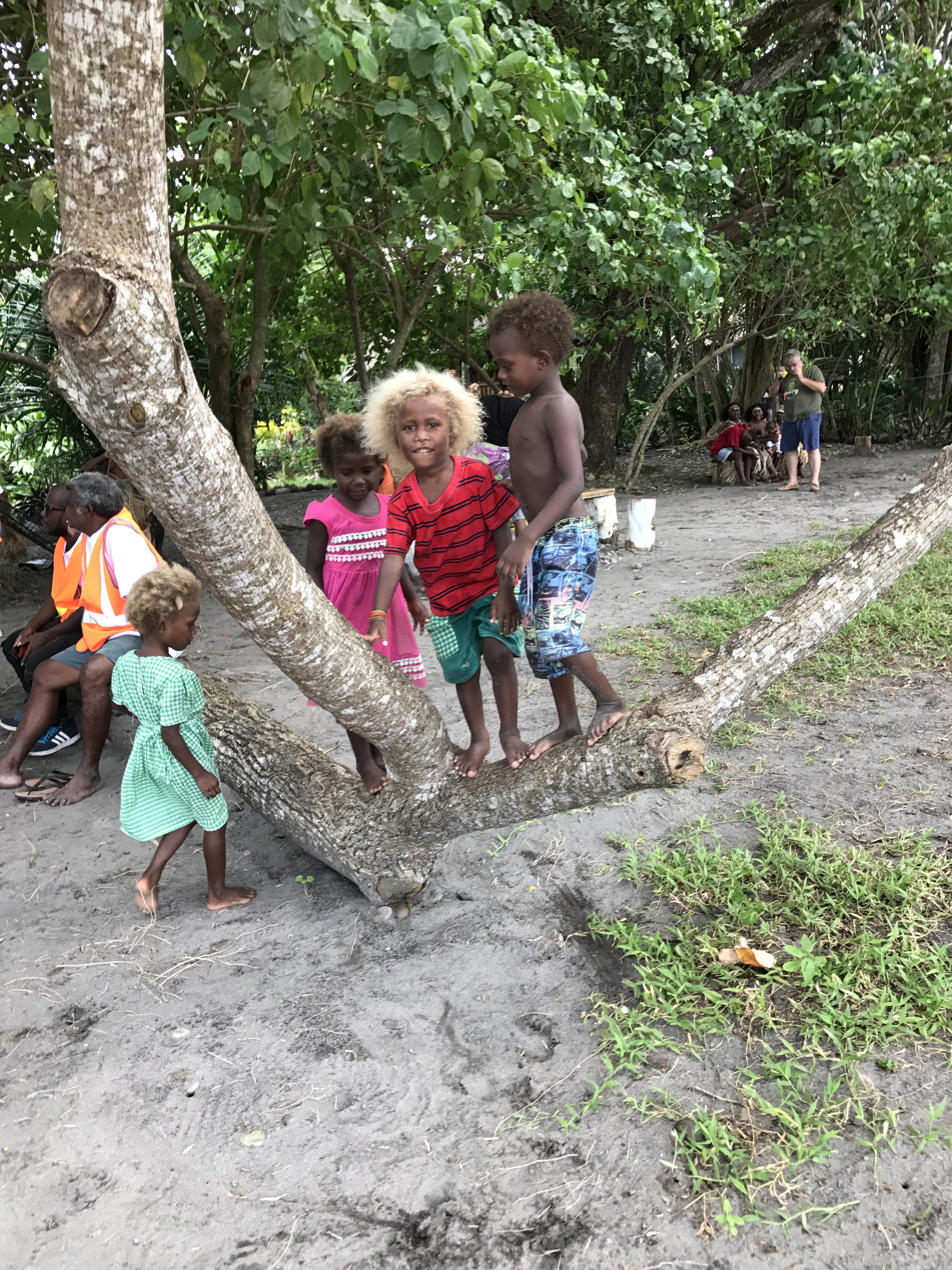
It’s time for the bus ride back to the ship.
We arrive just at the deadline for boarding the ship. It seems many of the passengers are not in a hurry to board as we peruse again for last minute purchases at the small craft tents set up especially for us.
Again the local troupe sings and dance and we are entranced by their music. Finally, the captain sounds the horn and security staff fan out to reign in the remaining passengers on board.
An announcement is made that the troupe will play once more on shore as we move away from the dock. We line up the decks and see that not only the dance troupe is singing and dancing but the tourism, vendors and dock folks have also lined up waving and singing in unison to us.
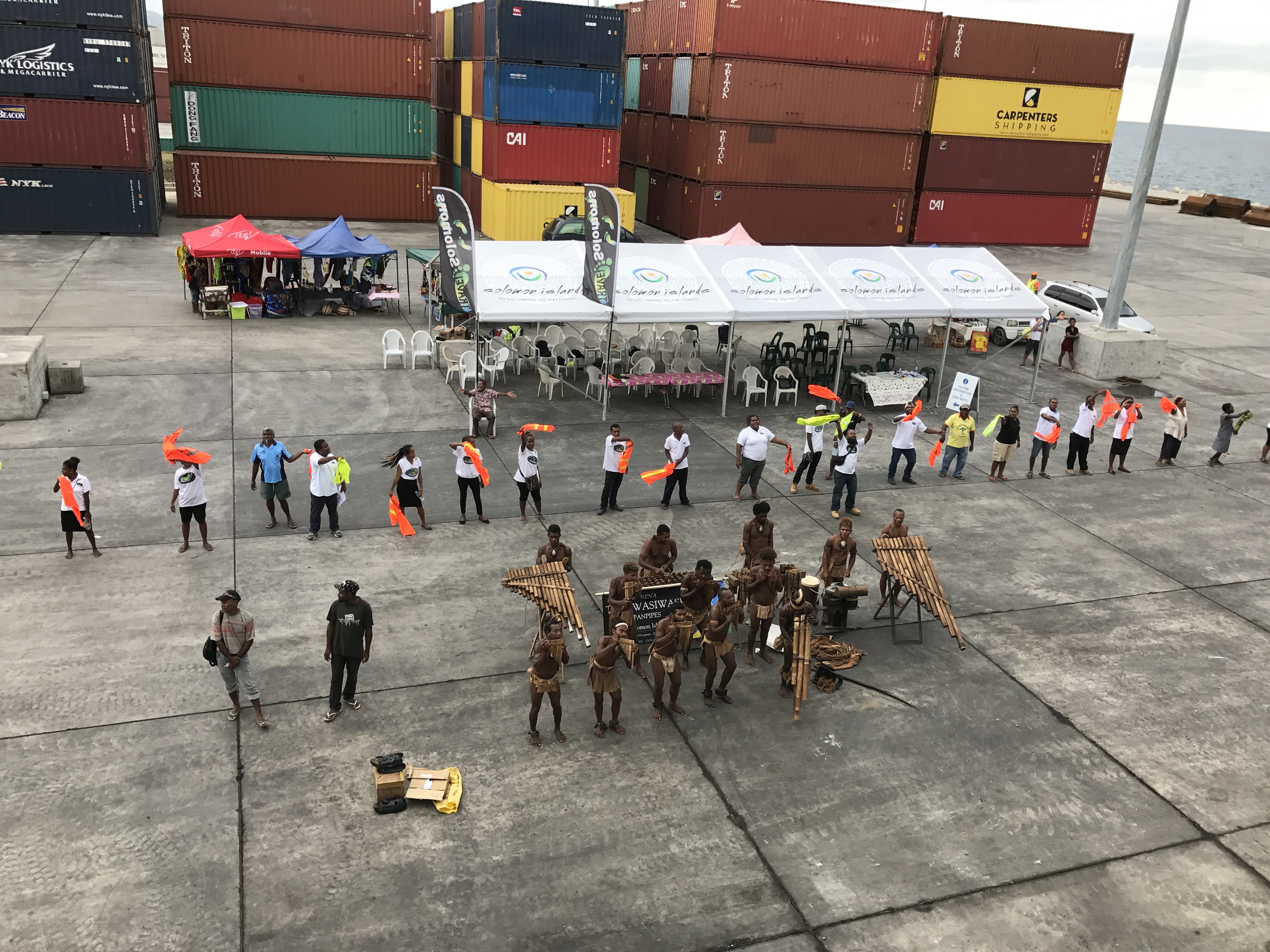
We repay the honour by joining in the song and waving our arms back and forth as we say our final goodbyes to Guadalcanal, one of the most friendliest islands we have visited.
Cheers,
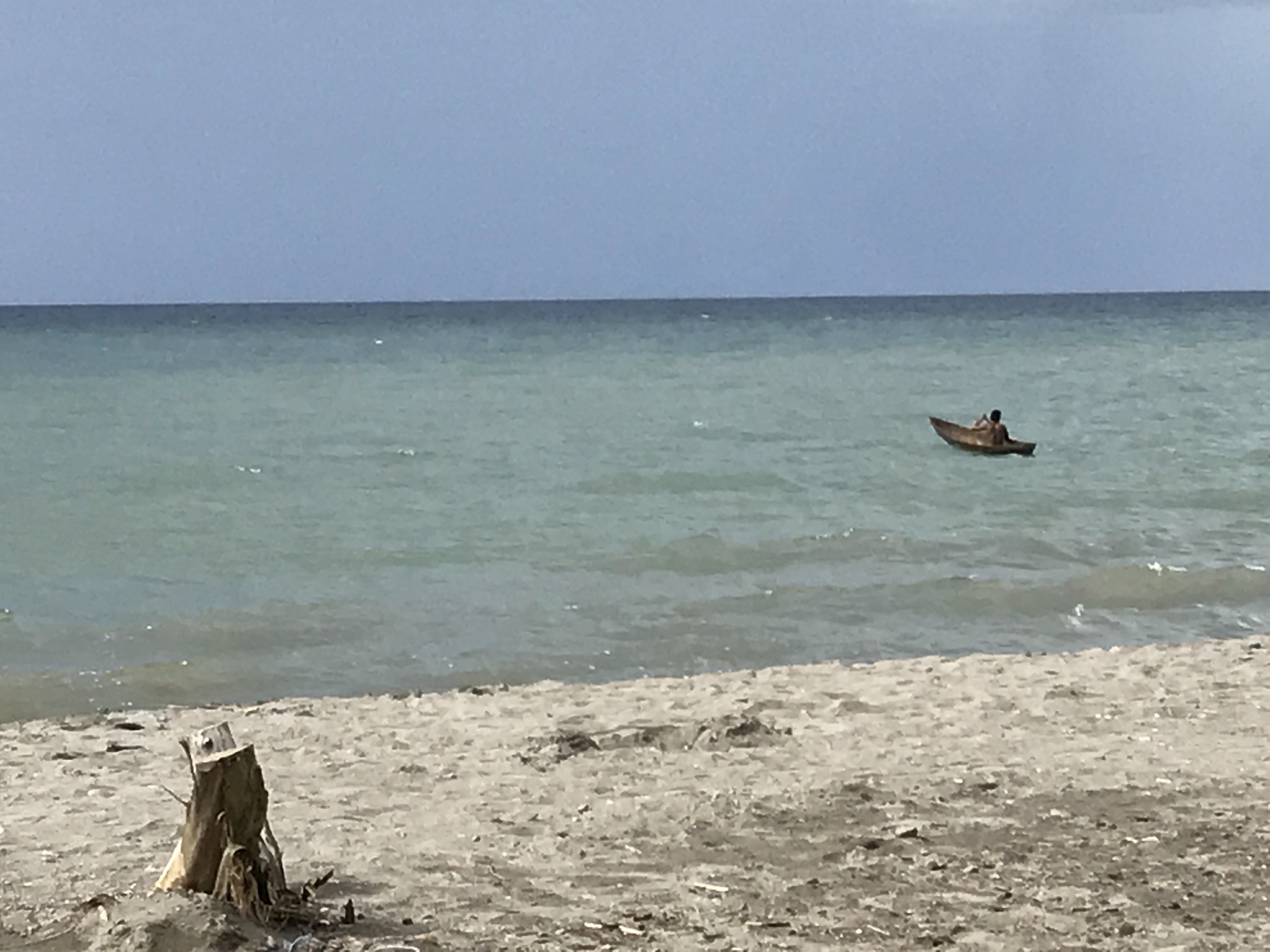
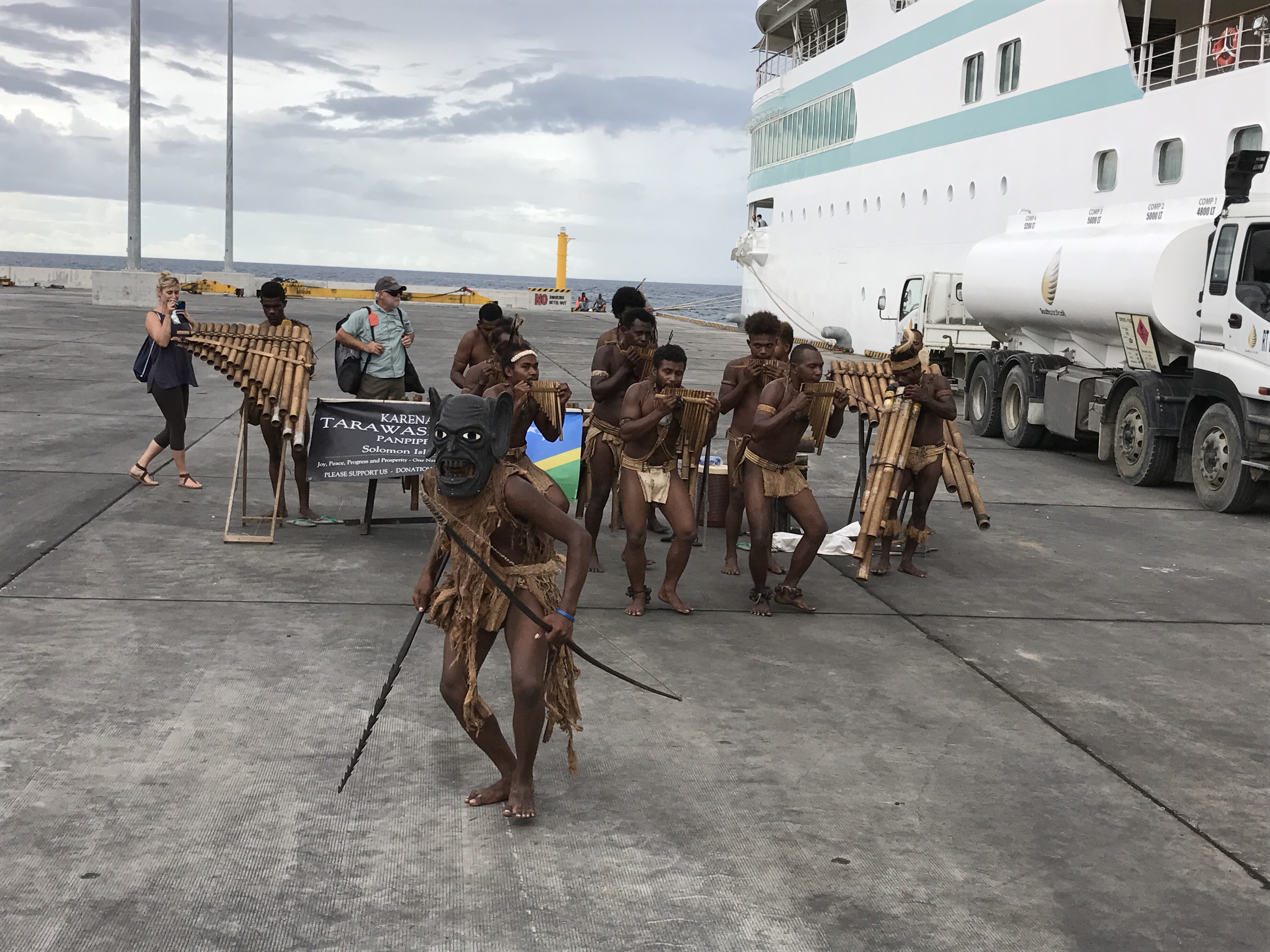
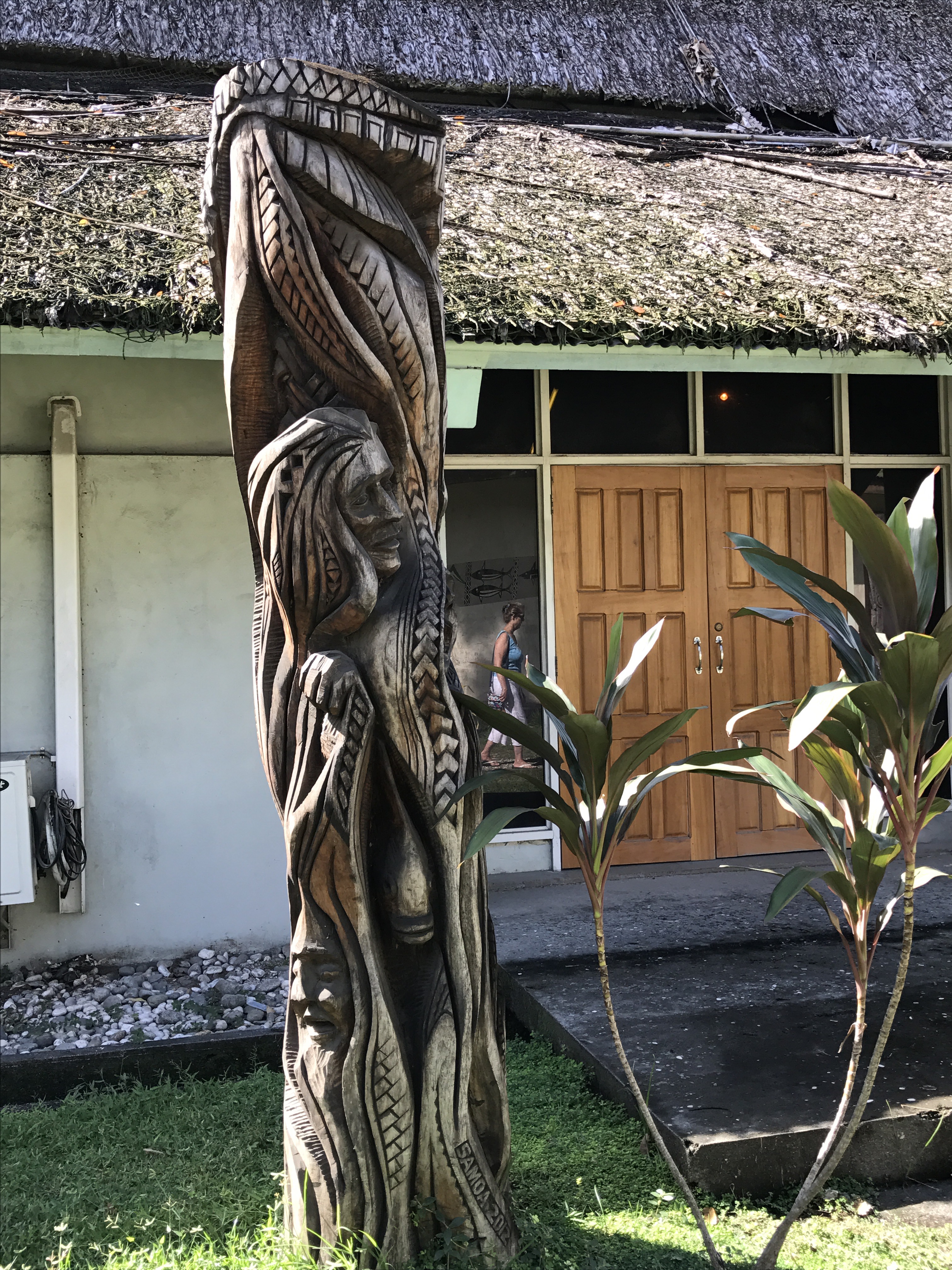
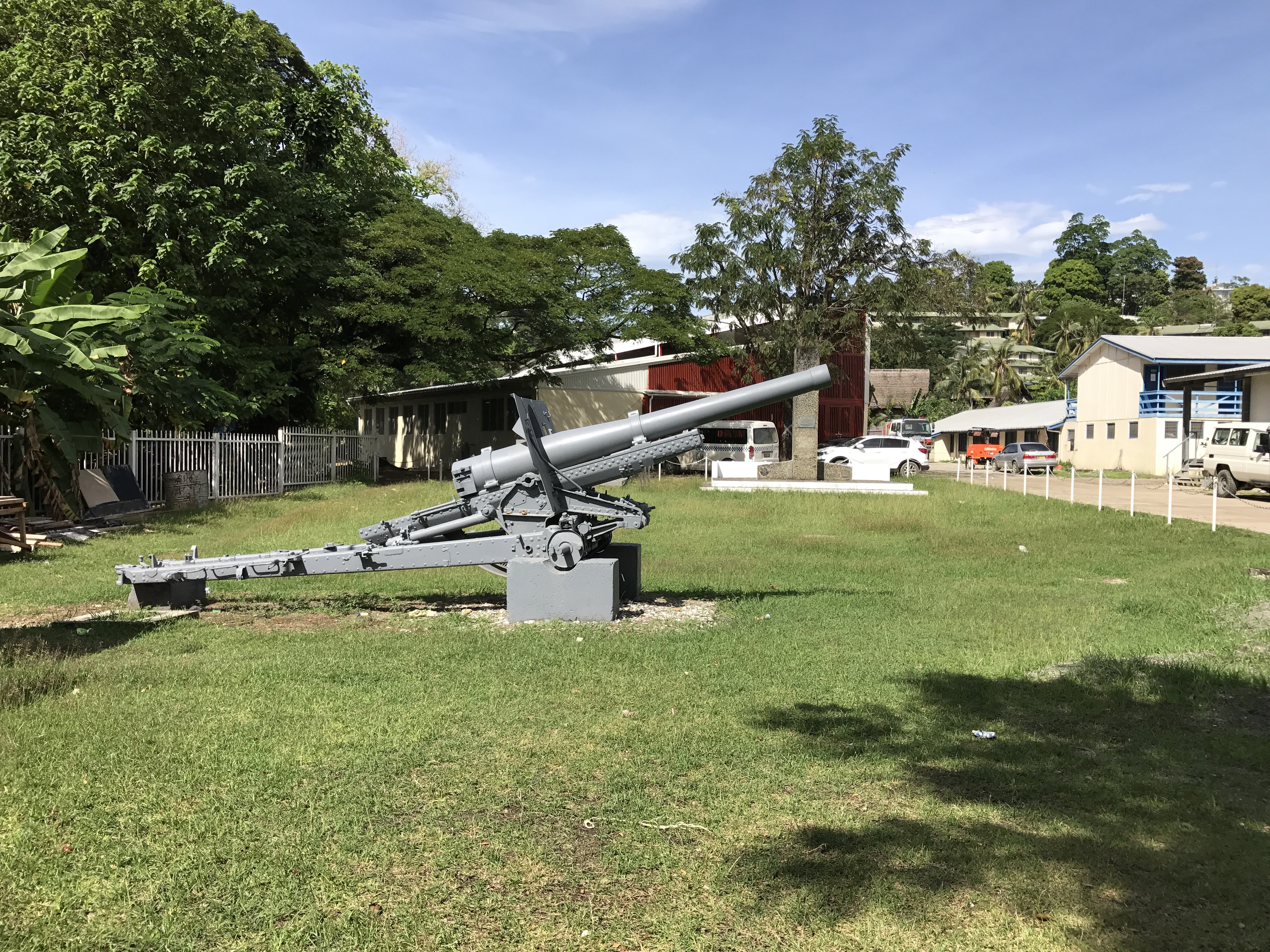
Recent Comments